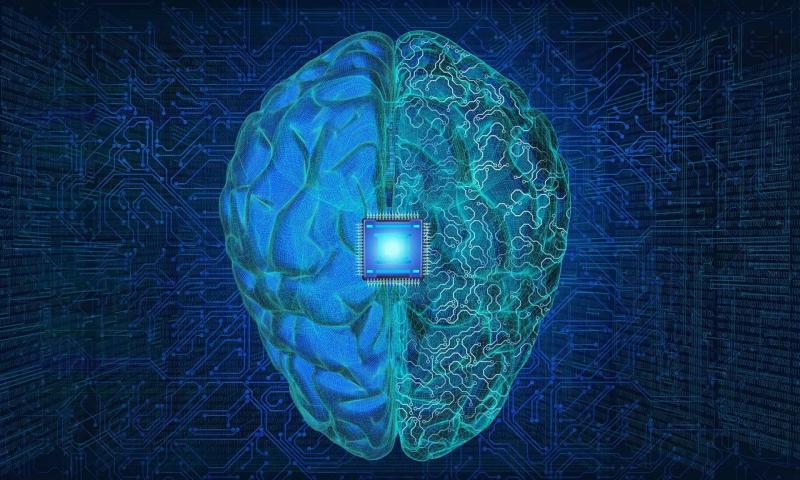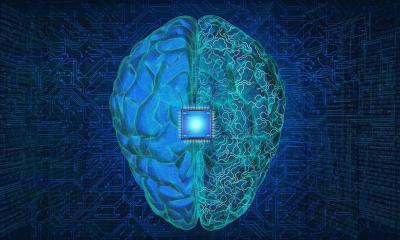The first volunteer to receive an implantation of a brain chip from Neuralink has successfully played chess and controlled various applications on his personal computer just by thinking, despite being quadriplegic. In a video broadcasted live, 29-year-old Noland Arbaq explained that he became quadriplegic due to a diving accident eight years ago, which deprived him of mobility. Arbaq stated, "On the same day the chip was implanted in my brain, I couldn't sleep until 6 AM because I was excited to play Civilization 6 just by thinking and looking at the screen."
Bliss Chapman, a Neuralink engineer overseeing this experiment, mentioned that Arbaq is his only friend who possesses "the ability to mentally control things," referring to the idea of manipulating objects through thought. Arbaq appeared excited and amazed by his experience with the company’s chip, saying, "I can move the mouse cursor wherever I want; I just focus my gaze somewhere on the screen, and it will move where I wanted it. I am very lucky to be part of this; every day it seems we learn new things, and I can't express how wonderful that is."
This event comes about a month after Elon Musk, the founder of Neuralink, announced that the first volunteer received a chip implant in his brain, thereby gaining the ability to control a computer mouse. Musk stated during an audio discussion on the X platform that "the progress made is good, and it appears the patient has fully recovered without facing any side effects; he was able to control the computer mouse and move it on the screen through his thoughts."
#### How Does the Neuralink Chip Work?
Neuralink began its clinical trials for its brain chip at the beginning of this year, targeting individuals with spinal cord, cervical disorders, or quadriplegia, after receiving approval from the U.S. Food and Drug Administration (FDA) in May of last year. Since its establishment, the company has attracted top talent, including renowned neuroscientists from leading universities, enhancing its position as a leader in this field. With substantial financial support, including a $100 million contribution from Musk himself, the company successfully expanded its workforce to 90 employees by July 2019.
Amid the various innovations the company aims to develop to shape the future of humanity, a revolutionary device resembling a computer chip has emerged, designed to implant incredibly fine threads directly into the brain. This chip consists of threads only 4 to 6 micrometers wide, capable of communicating with living neurons precisely and unprecedentedly. It also has a system for reading information from lab rats through 1,500 electrodes, which opens the door to transformative applications in human trials.
This chip relies on the long-known concept of brain-machine interfaces, allowing direct communication between the brain and an external device, such as a computer or prosthetic limb, without the need for traditional input methods like keyboards. Brain communication interfaces typically operate by detecting and interpreting brain signals, such as neural activity or electrical impulses, and translating them into commands that can control devices or provide feedback. There are different types of brain-machine interfaces, some of which do not require surgical procedures and rely on external sensors to detect brain activity, such as Electroencephalogram (EEG) and functional magnetic resonance imaging (fMRI).
The alternative type followed by the Neuralink chip is "brain-machine interfaces" that are "invasive," involving the implantation of electrical electrodes or sensors directly into brain tissues or on the brain's surface, enabling high-precision neural recordings and precise control, but this requires a surgical procedure that carries some risks.
#### Key Challenges
These interfaces face two key challenges: how to extract the correct information from the brain and how to input information into the brain. The first challenge involves trying to capture brain signals and record what the neurons are saying, while the second challenge pertains to inputting information into the natural flow of the brain or altering that flow or stimulating neurons.
Here, Musk's brain chip serves as an innovative solution. In a live presentation at the California Academy of Sciences in 2019, the Neuralink team revealed the prototype technology they were working on, which involves inserting extremely thin probes into the brain and using a robotic neurosurgery system to perform the procedures, along with an electronic system to process information from the neurons. The Neuralink probes are primarily made of polyimide, a biocompatible material paired with thin connectors of gold or platinum. These probes are inserted into the brain through a mechanical process conducted by a surgical robot, with each probe containing multiple electrodes capable of detecting electrical signals in the brain, boasting up to 3,072 electrodes in each configuration.
#### Advanced Device
The company developed a specific ASIC (Application-Specific Integrated Circuit) to create a recording system consisting of 1,536 channels with amplifiers for signals, analog-to-digital converters, and peripheral circuit controllers to digitize and process neural information. The Neuralink chip incorporates a needle made from tungsten and rhenium, able to insert up to six wires (192 electrodes) per minute, alongside an imaging system to achieve real-time input.
In July 2020, Neuralink received an advanced device designation from the U.S. FDA, allowing for limited human testing under the FDA’s guidelines for medical devices. The chip includes embedded electronics to process neural signals, such as amplifying signals, filtering noise, and converting analog signals into digital data. Data is wirelessly transmitted from the chip to external devices for further analysis and interpretation, enabling real-time monitoring of brain activity and bi-directional communication between the brain and external technology.
In addition to recording neural activity, Musk's brain chip also allows for electrical stimulation of specific areas of the brain, enabling researchers to study the effects of stimulating specific neural circuits on brain functions and behavior by linking the chip to technological devices. Users can interact with devices using only their thoughts, bypassing traditional input methods such as keyboards or touch screens. Brain-machine interfaces can control prosthetics or external structures, enabling individuals with paralysis or limb amputation to regain a certain level of movement and autonomy.
Neuralink is currently focused on helping individuals who cannot speak or write communicate with others by allowing them to control a computer mouse or keyboard or send messages through brain signals.
#### Challenges Facing the Musk Chip
Despite its immense potential for improving healthcare and communication, Musk's brain chip faces many obstacles, as interpreting and decoding brain signals is a significant challenge due to the brain's complexity and the variability of its activity among individuals and contexts. Challenges also include those related to the long-term durability of the implanted chip, as well as privacy and security concerns in using brain-machine interfaces.
It is noted that the brain chip market is currently experiencing fierce competition, as a number of other laboratories and companies have already succeeded in achieving similar operations, allowing patients to perform tasks on a computer through their thoughts and even regain control over some of their limbs.
Synchron, Neuralink's primary competitor in this market, made a breakthrough in July 2022 when it successfully implanted its first device in an American patient, surpassing Neuralink, according to a Bloomberg report. Synchron implanted a 1.5-inch device in the brain of a patient with amyotrophic lateral sclerosis at Mount Sinai West Medical Center in New York.
The brain chip market was valued at $5.85 billion in 2022 and is expected to reach $11.92 billion by 2030, according to the latest statistics from Precedence Research.




